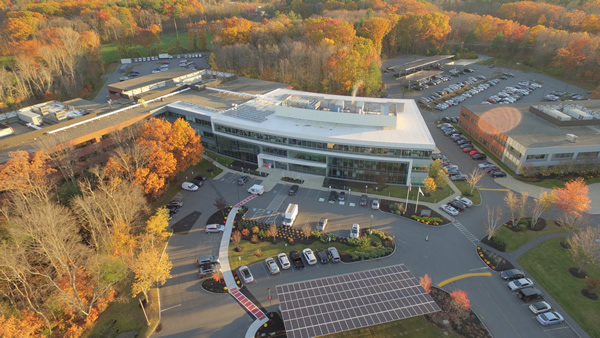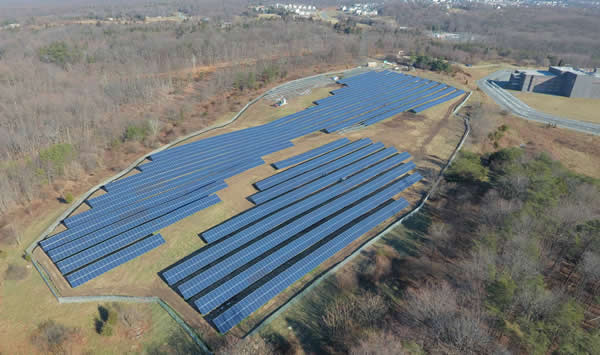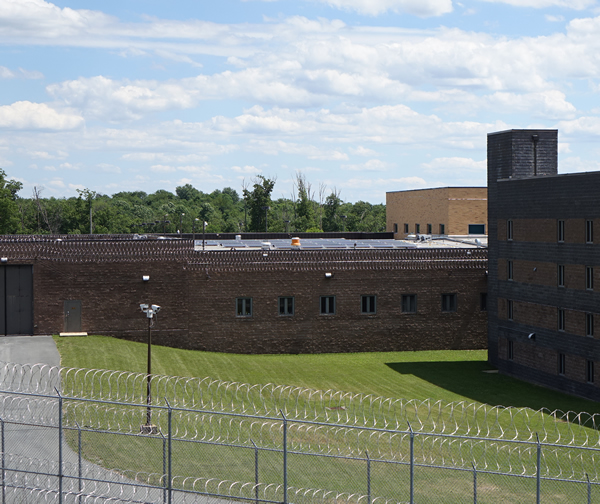
Boston One, the Schneider Electric campus in Andover, MA
Building a microgrid can be an expensive proposition. But, the growth of microgrid projects is surging worldwide, and that’s partly because new business models are lowering, if not eliminating, upfront costs and reducing the financial risk. The Energy-as-a-Service (EaaS) business model is evolving as a front-runner and growing quickly. Encompassing a wide variety of third party ownership schemes including Power Purchase Agreements (PPA), pay-as-you-go, leases and other types of financing agreements, new interest in EaaS for microgrid financing parallels development of the solar industry. In that case, the popularity of residential solar took off dramatically in 2009, when third party ownership models and solar leasing were introduced into the marketplace.
The fastest growing market segment for microgrids both in North America and globally is the Commercial & Industrial (C&I) sector, according to Peter Asmus, a research director contributing to Navigant Research’s Energy Technologies program. Asmus says the EaaS business model is an important factor driving that growth. “Commercial businesses perceive microgrid investments to be complex and potentially risky,” he observes. Furthermore, a company that has an unrelated core business focus might not want to invest its time and resources managing energy projects. Asmus says “the EaaS business model transfers that risk to developers.”
EaaS microgrids are the most popular business model globally in 2018 according to a recent Navigant Research report, and over the 10-year market forecast horizon. Spending under EaaS represents nearly $1.7 billion market in 2018, but that grows to over $12.3 billion by 2027, a CAGR of 25.0%, the most robust growth of any business model profiled.
Microgrids are Highly Customized and Costs are Hard to Compare
The capital expense to build a new microgrid or convert another system to a hybrid microgrid can range from the tens of thousands to hundreds of millions of dollars. The most expensive part of a microgrid is the generation assets – solar PV arrays, batteries, and/or combined heat and power systems. Next come investments in grid automation, and microgrid controls systems that can “intelligently” monitor and manage the all the components, controlling the way the microgrid consumes and produces energy. EaaS covers the capital costs through 3rd party ownership and leaves microgrid users with the more manageable operational expenses.

Montgomery County, MD Correctional Facility
Energy-as-a-Service (EaaS) Partnerships are Emerging
Companies that specialize in the different aspects of microgrid technology – generation, automation or controls – are forming partnerships to collaborate on microgrid development and offer new green power options to commercial customers.
One example is Schneider Electric, a specialist in energy management and automation that has become an innovator and global market leader in microgrid controls. Gregg Morasca, Vice President, Strategic Customers, Schneider Electric, North America, says Schneider Electric has now partnered on several “Energy-as-a-Service” projects with both Duke Energy and REC Solar, one of the nation’s largest commercial solar developers. One of their first projects was Schneider Electric’s Boston One corporate campus in Andover, MA, where the partners have built an advanced microgrid to serve as both a way to efficiently automate and control distributed energy resources and as a laboratory for research and development of microgrid technologies in a real-world environment.
Teaming up with the Duke Energy Renewables, which is the investor/owner of the project, Schneider Electric was able to avoid the upfront cost of building the microgrid at Boston One. The distributed energy resources include 448 kW of solar PV and a natural gas backup generator. The system is managed by the Schneider Electric Energy Control Center, a modular, scalable power control center that brings together the hardware, software, advanced controls and electrical distribution needed to operate the distributed energy resource. The advanced microgrid also includes Schneider Electric’s EcoStruxure™ Microgrid Advisor, a cloud-connected microgrid control system that uses weather forecast and site data to optimize the contribution of onsite resources to the overall energy performance of the site. All told, the system is expected to generate more than 520,000 kWh of electricity per year, providing power reliability and resilience, in addition to financial savings and clean energy. Morasca says with this new business model “We realized that partnerships on the technology side were going to be very significant, and the market has been very receptive.” From the perspective of the customers who are benefitting from EaaS, “There’s definitely a pent-up demand for microgrids,” Morasca says. “This new business model helps customers get to a cost per kWh that they can predict down the road. There’s more reliability on the energy side as well.”

PV Array on Montgomery County, MD Correctional Facility
“Microgrids-as-a-Service” Projects Avoid Upfront Costs for Local Government
Schneider Electric, Duke Energy Renewables and REC Solar have also teamed up on two advanced microgrid projects in Maryland where they have deployed hybrid systems to serve the Montgomery County Public Safety Headquarters (PSHQ) and Correctional Facility. The microgrids will include solar PV as well as high-efficiency combined heat and power from natural gas generators, infrastructure and power system upgrades, and advanced controls. The Maryland microgrids will produce approximately 3.3 million kWh of solar energy each year, and 7.4 million kWh hours of combined heat and power, saving energy by using waste heat from on-site power generation. By ensuring more reliable and efficient power, the microgrids will improve resilience for Montgomery County in the event of extreme weather or other natural disasters.
Through the combination of Schneider’s “Energy-as-a-Service” business model and a power purchase agreement, Montgomery County avoids paying the upfront costs of the project, but still benefits from clean energy and more resilient power. The EaaS financing and ownership structure allocates the costs and risks in such a way that could be an affordable model for other governments and commercial businesses as well.
HOMER International Microgrid Conference will Feature a Track on Microgrid Business Models
Don’t miss presentations by Gregg and others at the HOMER International Microgrid Conference, October 8-10 in San Diego. As Vice President, Strategic Customers at Schneider Electric, North America, Gregg will be presenting “Achieving Power Resilience and Sustainability Through Innovative Business Models.” He’ll discuss how emerging business models such as EaaS, can help solve for today’s resiliency, efficiency, and sustainability challenges by making such technological investments a reality. Schneider Electric will also reference its most recent strategic alliance with Dynamic Energy Networks, backed by The Carlyle Group, which is aimed at transforming the market by offering EaaS globally. Learn more about our speakers and conference agenda.

Interesting discourse. Our company is available to rally with HOMER & funding entities to deploy microgrids across Africa.